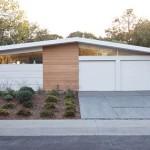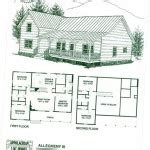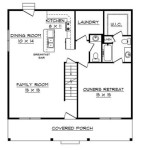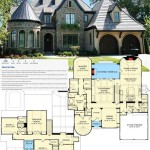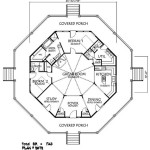House plans with outdoor kitchens combine indoor and outdoor living, offering homeowners a unique and functional space for entertaining, cooking, and relaxation. An outdoor kitchen is typically designed as an extension of the main house, featuring a built-in grill, sink, refrigerator, and other amenities. These outdoor living areas have become increasingly popular as people seek to extend their living space beyond the traditional indoor confines and create a seamless transition between their home and the natural surroundings.
Homeowners who are considering adding an outdoor kitchen to their property have a wide range of options to choose from. Some prefer to design a completely separate structure, while others opt to incorporate their outdoor kitchen into an existing patio or deck. The size and complexity of the outdoor kitchen will depend on the homeowner’s needs and budget.
Regardless of the design, house plans with outdoor kitchens offer numerous benefits. They provide a convenient and inviting space for entertaining guests, cooking family meals, and enjoying the outdoors. Outdoor kitchens also add value to homes and can be a great selling point for potential buyers.
When designing house plans with outdoor kitchens, there are several important points to consider:
- Location, location, location
- Size and layout
- Appliances and amenities
- Seating and dining areas
- Privacy and screening
- Lighting and electrical
- Storage and prep space
- Budget and timeline
- Building codes and permits
- Professional design and installation
By carefully considering these factors, homeowners can create an outdoor kitchen that is both functional and beautiful, and that will provide years of enjoyment.
Location, location, location
When choosing the location for your outdoor kitchen, there are several factors to consider:
- Proximity to the house: The outdoor kitchen should be close enough to the house to be convenient, but not so close that it becomes an extension of the indoor kitchen. You should be able to easily access the outdoor kitchen from the main living areas of the house, but you should also be able to enjoy some privacy and separation from the indoors.
- Sun exposure: If you plan on using your outdoor kitchen frequently, you will want to choose a location that gets plenty of sun. This will help to keep the kitchen warm and comfortable, even on cooler days. However, you may also want to consider some shade, such as a pergola or umbrella, to protect you from the sun’s harmful rays.
- Wind protection: If you live in an area with strong winds, you will need to choose a location for your outdoor kitchen that is protected from the wind. This will help to prevent your grill and other appliances from being damaged, and it will also make it more comfortable to cook and dine outdoors.
- Drainage: The location of your outdoor kitchen should also have good drainage. This will help to prevent water from pooling around the kitchen, which can create a slippery and dangerous surface.
- Privacy: If you value privacy, you will want to choose a location for your outdoor kitchen that is not visible from the street or from neighboring properties. You may also want to consider adding some privacy screens or plantings around the kitchen.
Once you have considered all of these factors, you can start to narrow down your choices for the location of your outdoor kitchen. It is important to choose a location that meets your needs and that will allow you to enjoy your outdoor kitchen to the fullest.
Size and layout
The size and layout of your outdoor kitchen will depend on a number of factors, including the size of your yard, the number of people you typically entertain, and your budget. Here are a few things to consider when planning the size and layout of your outdoor kitchen:
- The size of your yard: The size of your yard will determine how large your outdoor kitchen can be. If you have a small yard, you may need to opt for a smaller kitchen with fewer amenities. If you have a large yard, you can afford to build a larger kitchen with more features.
- The number of people you typically entertain: If you frequently entertain large groups of people, you will need a larger outdoor kitchen with more seating and dining space. If you typically only entertain small groups of people, you may be able to get away with a smaller kitchen.
- Your budget: The cost of your outdoor kitchen will vary depending on the size, layout, and materials used. It is important to set a budget before you start planning your kitchen so that you can avoid overspending.
Once you have considered these factors, you can start to plan the size and layout of your outdoor kitchen. Here are a few tips:
- Create a floor plan: A floor plan will help you to visualize the layout of your outdoor kitchen and make sure that everything fits together properly. Be sure to include the location of the grill, sink, refrigerator, and any other appliances or features that you want in your kitchen.
- Consider the flow of traffic: When planning the layout of your outdoor kitchen, it is important to consider the flow of traffic. You want to make sure that guests can easily move around the kitchen without bumping into each other or getting in the way of the cook.
- Create a focal point: Every outdoor kitchen should have a focal point. This could be a fireplace, a pizza oven, or even a beautiful water feature. The focal point will help to draw people into the kitchen and create a sense of coziness.
By following these tips, you can create an outdoor kitchen that is both functional and beautiful, and that will provide years of enjoyment for you and your guests.
Appliances and amenities
No outdoor kitchen is complete without the right appliances and amenities. Here are a few of the most popular options:
- Grill: A grill is the heart of any outdoor kitchen. It is used for cooking all sorts of food, from burgers and hot dogs to steaks and fish. There are many different types of grills to choose from, so you can find one that fits your needs and budget.
- Sink: A sink is essential for any kitchen, indoor or outdoor. It is used for washing hands, rinsing food, and cleaning dishes. Be sure to choose a sink that is large enough to accommodate your needs.
- Refrigerator: A refrigerator is a great way to keep food and drinks cold while you are cooking and entertaining outdoors. It is also a convenient place to store leftovers. Be sure to choose a refrigerator that is the right size for your needs.
- Ice maker: An ice maker is a great way to keep your guests’ drinks cold. It is also a convenient way to make ice for cocktails and other beverages. Be sure to choose an ice maker that produces enough ice for your needs.
In addition to these essential appliances, there are a number of other amenities that you can add to your outdoor kitchen. These amenities can make your kitchen more functional and enjoyable, and they can also add value to your home. Here are a few popular options:
- Pizza oven: A pizza oven is a great way to cook delicious pizzas at home. It is also a fun way to entertain guests.
- Fireplace: A fireplace can provide warmth and ambiance to your outdoor kitchen. It is also a great place to gather with friends and family on cool evenings.
- Water feature: A water feature can add a touch of tranquility to your outdoor kitchen. It can also help to attract birds and other wildlife.
- Lighting: Good lighting is essential for any outdoor kitchen. It allows you to cook and entertain after dark. Be sure to choose lighting that is bright enough for your needs, but not so bright that it is glaring.
- Seating and dining areas: No outdoor kitchen is complete without seating and dining areas. This is where you will gather with friends and family to enjoy your meals. Be sure to choose seating and dining furniture that is comfortable and stylish.
By carefully choosing the right appliances and amenities, you can create an outdoor kitchen that is both functional and beautiful, and that will provide years of enjoyment for you and your guests.
Seating and dining areas
No outdoor kitchen is complete without seating and dining areas. This is where you will gather with friends and family to enjoy your meals. There are many different ways to design your seating and dining areas, so you can find a solution that fits your needs and style.
One popular option is to create a built-in seating area. This can be done by constructing a bench or banquette around the perimeter of your outdoor kitchen. Built-in seating is a great way to save space and create a more intimate atmosphere. It is also a good option if you have children, as it will help to keep them safe and contained.
Another option is to use freestanding furniture for your seating and dining areas. This gives you more flexibility in terms of arrangement and style. You can choose from a variety of chairs, tables, and benches to create a look that is unique to your outdoor kitchen. Freestanding furniture is also easier to move around, so you can reconfigure your seating and dining areas as needed.
When choosing seating and dining furniture for your outdoor kitchen, it is important to consider the materials used. You will want to choose furniture that is durable and weather-resistant. You should also consider the style of your outdoor kitchen and choose furniture that complements the overall design.
Once you have chosen your seating and dining furniture, you can start to arrange it in your outdoor kitchen. Here are a few tips:
- Create a focal point: Every outdoor kitchen should have a focal point. This could be a fireplace, a pizza oven, or even a beautiful water feature. The focal point will help to draw people into the kitchen and create a sense of coziness.
- Consider the flow of traffic: When arranging your seating and dining furniture, it is important to consider the flow of traffic. You want to make sure that guests can easily move around the kitchen without bumping into each other or getting in the way of the cook.
- Create a comfortable and inviting atmosphere: Your seating and dining areas should be comfortable and inviting. Choose furniture that is comfortable to sit in and that is the right size for your space. You may also want to add some cushions or pillows to make your seating areas more comfortable.
By following these tips, you can create seating and dining areas that are both functional and beautiful, and that will provide years of enjoyment for you and your guests.
Privacy and screening
Privacy and screening are important considerations for any outdoor kitchen. You want to be able to enjoy your outdoor kitchen without feeling like you are on display to the neighbors. There are a number of ways to create privacy and screening for your outdoor kitchen, including:
- Planting trees and shrubs: Trees and shrubs are a great way to create privacy and screening for your outdoor kitchen. They can be planted around the perimeter of your kitchen or in strategic locations to block unwanted views. Be sure to choose trees and shrubs that are appropriate for your climate and that will provide the level of privacy you desire.
- Building a fence or wall: A fence or wall is another effective way to create privacy and screening for your outdoor kitchen. Fences and walls can be made from a variety of materials, including wood, vinyl, and brick. Be sure to choose a fence or wall that is the right height and style for your needs.
- Installing privacy screens: Privacy screens are a great way to add privacy to your outdoor kitchen without blocking the view. Privacy screens can be made from a variety of materials, including fabric, wood, and metal. They can be attached to a fence or wall, or they can be freestanding.
- Using curtains or drapes: Curtains or drapes can be used to create privacy and screening for your outdoor kitchen. They can be hung from a pergola or awning, or they can be attached to a fence or wall. Curtains or drapes can be made from a variety of materials, including fabric, vinyl, and plastic.
By following these tips, you can create a private and screened-in outdoor kitchen that you can enjoy for years to come.
In addition to the methods listed above, there are a number of other things you can do to create privacy and screening for your outdoor kitchen. These include:
- Orienting your outdoor kitchen away from the street and neighboring properties: If possible, orient your outdoor kitchen away from the street and neighboring properties. This will help to reduce noise and visual intrusion.
- Creating a buffer zone between your outdoor kitchen and the property line: Create a buffer zone between your outdoor kitchen and the property line by planting trees, shrubs, or flowers. This will help to create a sense of separation and privacy.
- Using outdoor lighting to create a sense of security: Good outdoor lighting can help to create a sense of security and privacy. Be sure to install lighting around the perimeter of your outdoor kitchen and in any areas where you may need additional light.
By following these tips, you can create a private and screened-in outdoor kitchen that you can enjoy with your family and friends.
Lighting and electrical
Proper lighting and electrical work are essential for any outdoor kitchen. Good lighting will allow you to cook and entertain after dark, and it will also help to create a safe and inviting atmosphere. Electrical work should be done by a qualified electrician to ensure that your outdoor kitchen is safe and up to code.
- Lighting:
There are a number of different types of lighting that you can use in your outdoor kitchen. Ambient lighting provides general illumination, while task lighting is used for specific tasks, such as cooking or grilling. Accent lighting can be used to highlight focal points, such as a fireplace or water feature. Be sure to choose lighting fixtures that are weather-resistant and that will provide the right amount of light for your needs.
Electrical outlets:
Electrical outlets are essential for any outdoor kitchen. You will need outlets for your appliances, as well as for any other electrical devices that you may use, such as a blender or a sound system. Be sure to install outlets in convenient locations, and make sure that they are protected from the elements.
Electrical wiring:
The electrical wiring in your outdoor kitchen should be done by a qualified electrician. The electrician will need to run wires from your electrical panel to your outdoor kitchen, and they will also need to install outlets and switches. Be sure to have the electrician inspect your electrical system regularly to ensure that it is safe and up to code.
Safety features:
In addition to the lighting and electrical work listed above, there are a number of safety features that you should consider for your outdoor kitchen. These features include:
- Ground fault circuit interrupters (GFCIs): GFCIs are electrical devices that help to prevent electrical shocks. They are required by code in all outdoor kitchens, and they should be installed on all outlets.
- Surge protectors: Surge protectors help to protect your appliances and electrical devices from power surges. They are a good idea for any outdoor kitchen, especially if you live in an area that is prone to power outages.
- Smoke and carbon monoxide detectors: Smoke and carbon monoxide detectors are essential for any home, including outdoor kitchens. They can help to save lives in the event of a fire or carbon monoxide leak.
By following these tips, you can ensure that your outdoor kitchen is safe, well-lit, and up to code.
Storage and prep space
Adequate storage and prep space is essential for any outdoor kitchen. You will need space to store your appliances, cookware, utensils, and other cooking essentials. You will also need space to prepare your food, such as a cutting board and a sink for washing fruits and vegetables.
There are a number of different ways to create storage and prep space in your outdoor kitchen. One option is to build a cabinet or cupboard. Cabinets and cupboards can be made from a variety of materials, including wood, metal, and plastic. They can be freestanding or built-in.
Another option is to use drawers. Drawers are a great way to store small items, such as utensils and spices. They can also be used to store larger items, such as pots and pans. Drawers can be made from a variety of materials, including wood, metal, and plastic. They can be freestanding or built-in.
You may also want to consider adding a prep sink to your outdoor kitchen. A prep sink is a great way to wash fruits and vegetables, and it can also be used for other tasks, such as rinsing dishes or filling a pot with water. Prep sinks can be made from a variety of materials, including stainless steel, copper, and granite. They can be freestanding or built-in.
When planning your storage and prep space, be sure to consider the following factors:
- The size of your outdoor kitchen: The size of your outdoor kitchen will determine how much storage and prep space you need.
- The number of people you typically entertain: If you frequently entertain large groups of people, you will need more storage and prep space.
- The types of food you typically cook: If you cook a lot of complex dishes, you will need more prep space.
- Your budget: The cost of storage and prep space will vary depending on the materials used and the complexity of the design.
By carefully considering these factors, you can create a storage and prep space that meets your needs and that will help you to enjoy your outdoor kitchen to the fullest.
Budget and timeline
The budget for your outdoor kitchen will depend on a number of factors, including the size of the kitchen, the materials used, and the complexity of the design. A simple outdoor kitchen with a grill, sink, and refrigerator can cost as little as $5,000, while a more elaborate kitchen with a full range of appliances and features can cost upwards of $50,000.
In addition to the cost of construction, you will also need to factor in the cost of appliances, furniture, and other accessories. These costs can add up quickly, so it is important to set a budget before you begin planning your outdoor kitchen.
The timeline for your outdoor kitchen project will also depend on a number of factors, including the size and complexity of the kitchen, the availability of materials, and the weather. A simple outdoor kitchen can be completed in as little as a few weeks, while a more elaborate kitchen may take several months or even longer to complete.
It is important to be realistic about your budget and timeline when planning your outdoor kitchen. By carefully considering all of the factors involved, you can create a beautiful and functional outdoor kitchen that meets your needs and fits your budget.
Here are a few tips for saving money on your outdoor kitchen project:
- Choose less expensive materials: There are a number of less expensive materials that you can use for your outdoor kitchen, such as concrete pavers instead of natural stone, and laminate countertops instead of granite.
- Do some of the work yourself: If you are handy, you can save money by doing some of the work yourself, such as building the cabinets or installing the appliances.
- Shop around for the best prices: Be sure to shop around for the best prices on materials and appliances before you make any purchases.
By following these tips, you can save money on your outdoor kitchen project without sacrificing quality.
Building codes and permits
Before you begin construction on your outdoor kitchen, it is important to check with your local building department to see if you need a permit. Building codes and permits vary from municipality to municipality, so it is important to check with your local officials to find out what the requirements are in your area.
- Building permits: A building permit is typically required for any permanent structure that is attached to your home, such as a deck or a patio. If your outdoor kitchen is going to be a permanent structure, you will need to obtain a building permit before you begin construction.
- Electrical permits: If your outdoor kitchen is going to have any electrical work, you will need to obtain an electrical permit. Electrical work must be done by a qualified electrician, and the electrician will need to obtain the necessary permits before beginning work.
- Plumbing permits: If your outdoor kitchen is going to have any plumbing, you will need to obtain a plumbing permit. Plumbing work must be done by a qualified plumber, and the plumber will need to obtain the necessary permits before beginning work.
- Gas permits: If your outdoor kitchen is going to have any gas appliances, you will need to obtain a gas permit. Gas work must be done by a qualified gas fitter, and the gas fitter will need to obtain the necessary permits before beginning work.
Failure to obtain the necessary building codes and permits can result in fines and penalties. It is important to check with your local building department to find out what the requirements are in your area before you begin construction on your outdoor kitchen.
Professional design and installation
Hiring a professional to design and install your outdoor kitchen is the best way to ensure that your kitchen is both beautiful and functional. A professional designer can help you to create a kitchen that meets your specific needs and that fits your budget. A professional installer can ensure that your kitchen is built to code and that it is safe for use.
Here are some of the benefits of hiring a professional to design and install your outdoor kitchen:
- Professional designers have the experience and expertise to create a kitchen that is both beautiful and functional. They can help you to choose the right materials and appliances, and they can design a layout that maximizes space and efficiency.
- Professional installers have the skills and experience to build your kitchen to code and to ensure that it is safe for use. They will also be able to help you to troubleshoot any problems that may arise during the installation process.
- Hiring a professional can save you time and money in the long run. A professional designer can help you to avoid costly mistakes, and a professional installer can ensure that your kitchen is built to last.
If you are considering adding an outdoor kitchen to your home, it is important to hire a professional to design and install it. A professional can help you to create a beautiful and functional kitchen that will provide years of enjoyment for you and your family.




:max_bytes(150000):strip_icc()/CHTLDBurlingGame-5a6d1f5e3de4230038045562.jpg)





Related Posts




